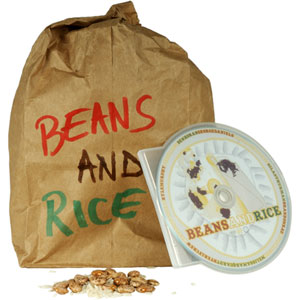Saturday, May 14, 2011 by: Paul Fassa
See all articles by this author
Email this author
And it just so happens that most beans worth eating need to be soaked the night before cooking. This also results in a much shorter cooking time, a half hour or so. Brown rice can be soaked through the night also, but basmati white rice needs only to be thoroughly rinsed until the water is completely clear prior to cooking.
Lentils don’t need to be soaked prior to cooking unless you’re very concerned about phytic acid or phytates. In any event, whatever is soaked should not be cooked in the same water. Remove grains or beans from the soaking water and replace that water for cooking. Of course, we’re talking pure water with most of the chlorine and sodium fluoride removed.
Preparation
There are several ways to boil rice that is not sticky. You can Google those methods or simply invest in a steamer that doesn’t use aluminum. Beans, except for lentils, need to be soaked for eight or more hours. Overnight is efficient. You can tell when they’re ready to cook because you can bite through them easily after sufficient soaking.
After you change the water, bring the beans to a boil then simmer until soft. Usually this takes a half-hour to 45 minutes max. The rice needs to simmer with a lid on it for some time, whether using a pan, rice steamer, or cooker.
This writer likes to use black beans, chick peas (garbanzo), or lentils. Basmati white rice is used most often with the black beans while garbanzos and lentils are used with brown or white basmati. Basmati rice is a long grain rice developed in India and South Asia, but grown in the USA now as well.
Parboiled white basmati is an excellent choice. Parboiling is a process of removing the husks efficiently while retaining most of the nutrition and divesting a lot of phytates. Don’t confuse parboiled rice with processed instant rice. Parboiled rice takes just as long to cook as any other, 30 to 45 minutes on average. (Source 3 below)
Rice and beans combined offer a lot of nutrients, including protein, along with a healthy, high fiber content. There are many ways to put together fulfilling, tasty rice and beans dishes. (Source 4 below)
Sources for more information:
(1)http://www.westonaprice.org/food-fe…
(2)http://www.naturalnews.com/031902_g…
(3)http://www.wisegeek.com/what-is-par…
(4) http://www.naturalnews.com/028007_f…
http://www.livestrong.com/article/2…







